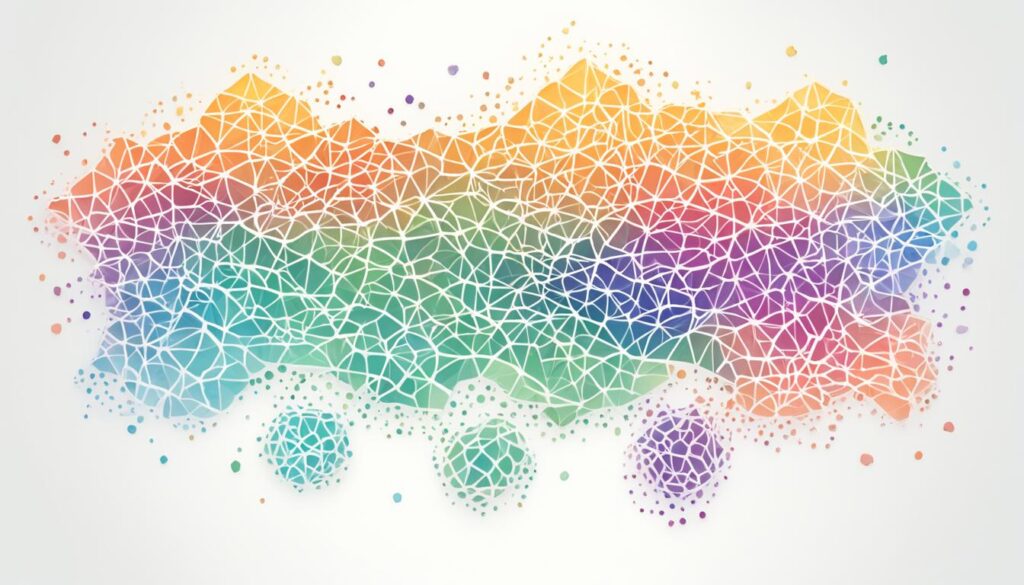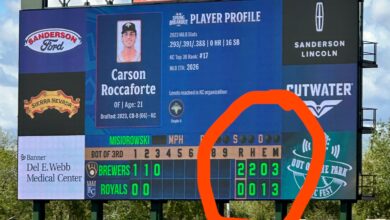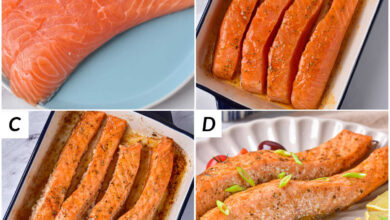Mastering Collections in Golang: A Friendly Guide

Let’s dive into the world of collections in Golang. We’ll explore slices, arrays, and maps. You’ll learn how to create and use these data structures effectively.
We’ll cover filtering, transforming, and aggregating collections. These skills will help you build efficient Golang applications. This guide is perfect for both new and experienced developers.
By the end, you’ll be a master of collections in Golang. Your coding skills will reach new heights. Let’s get started on this exciting journey!
Key Takeaways
- Explore the various types of collections available in Golang, including slices, arrays, and maps.
- Learn how to create, initialize, and perform essential operations on these data structures.
- Discover techniques for filtering, transforming, and aggregating collections to build powerful Golang applications.
- Gain a deep understanding of how to leverage the Golang collections library and containers to enhance your coding productivity.
- Familiarize yourself with the key-value store in Go and how to utilize maps effectively.
Introduction to Collections in Golang
Understanding the Importance of Collections
Collections are key to organizing data in Golang. They help manage and manipulate information efficiently. Slices, arrays, and maps are essential for building high-performing apps.
Knowing these collection types is crucial. It helps you create scalable applications. Each type has unique features for different needs.
Types of Collections in Golang
Golang offers various collection types. Each has its own traits and uses. Let’s explore the different types available:
- Slices: Slices are dynamic arrays in Golang. They can grow or shrink as needed. Slices offer flexibility for working with data collections.
- Arrays: Arrays in Golang have a fixed size. They store similar data types. Arrays are useful for structured and efficient data access.
- Maps: Maps are unordered key-value pairs in Golang. They’re like Java’s HashMap. Maps allow quick lookup, insertion, and deletion of data.
Each collection type has pros and cons. Your choice depends on your project’s needs. Understanding these types helps in better Golang project design.
| Collection Type | Key Characteristics | Use Cases |
|---|---|---|
| Slices | Dynamic, resizable arrays | Storing and manipulating variable-sized collections of data |
| Arrays | Fixed-size, homogeneous data structures | Storing and accessing data in a structured and efficient manner |
| Maps | Unordered collections of key-value pairs | Implementing efficient lookup, insertion, and deletion of data |
Knowing Golang’s collection types is vital. It helps you make smart choices in app design. You can use each type’s strengths to build efficient projects.
Slices: The Dynamic Arrays of Golang
Slices are powerful and versatile collection types in Golang. They offer greater flexibility and performance than fixed-size arrays. Let’s explore how to work with slices effectively.
We’ll cover creating, initializing, and using various slice operations. The Golang standard library provides many useful functions for working with slices.
Creating and Initializing Slices
Slices act as “windows” to parts of an array. They allow working with dynamic data collections without allocating new memory.
Creating and manipulating slices are cheap operations. They only involve changing pointer values and integer values.
You can create a slice using the built-in make() function or declare it directly. Here are two examples:
- Declare a slice directly:
mySlice := []int{1, 2, 3, 4, 5} - Create a slice using
make():mySlice := make([]int, 5)
Slice Operations and Functions
Golang’s standard library offers many functions for working with slices. These include appending, slicing, and iterating over slices.
Mastering these functions is crucial for transforming, filtering, and aggregating data in slices. One common operation is concatenating slices using the append() function.
However, this operation can lead to unexpected behavior. It can cause issues with allocating new arrays and copying content.
| Operation | Description |
|---|---|
| Append | Add elements to the end of a slice |
| Slicing | Create a new slice from an existing one |
| Iteration | Loop through the elements of a slice |
Understanding slice operations is crucial to avoid data corruption. It helps you write efficient, reliable code.
The Golang standard library provides many functions to help you work with slices effectively. Use these tools to make the most of slices in your programs.
Arrays: Fixed-Size Collections in Golang
Golang supports fixed-size collections called arrays, alongside dynamic slices. Arrays store a set number of elements of the same type. They’re useful when you know the exact element count beforehand.
To use arrays in Golang, declare the length and element type. The size remains constant after creation. This makes arrays perfect for storing weekly temperatures or student scores.
Unlike slices, arrays in Golang are value types. Copying an array duplicates the entire collection. Changes to the copy don’t affect the original. This can be helpful but may increase memory usage with larger arrays.
Golang also allows multi-dimensional arrays. These nested arrays are great for representing grids or matrices. They’re particularly useful for tabular data or spatial information.
Understanding the features of arrays and slices helps you make better coding decisions. It leads to more efficient and maintainable Golang projects. Choose the right collection type based on your specific needs.
“Arrays are a fundamental data structure in Golang, providing a fixed-size collection of elements that can be efficiently accessed and manipulated.”
Maps: Key-Value Stores in Golang
Golang’s maps store and retrieve key-value pairs efficiently. They’re vital for many Golang apps. Maps help developers manage data effectively.
Understanding map basics is crucial for Golang coders. You can create, operate, and use map functions with ease.
Declaring and Initializing Maps
Creating maps in Golang is simple. Use the make() function or a map literal. Keys and values must share the same data type.
The len() function determines a map’s length. Here’s how to declare and initialize a map:
// Declare a map using the make() function
myMap := make(map[string]int)
// Declare and initialize a map using a map literal
myOtherMap := map[string]float64{
"apple": 0.99,
"banana": 1.25,
"orange": 0.75,
}
Map Operations and Functions
Golang’s library offers various functions for map handling. You can fetch values, check for keys, and loop through key-value pairs.
Adding, changing, and removing map elements is also possible. Here’s a table of common map operations:
| Operation | Syntax | Description |
|---|---|---|
| Retrieve a value | value, exists := myMap[key] |
Retrieves the value associated with the given key. The second returned value indicates whether the key exists in the map. |
| Add or update a key-value pair | myMap[key] = value |
Adds a new key-value pair to the map, or updates the value of an existing key. |
| Delete a key-value pair | delete(myMap, key) |
Removes the key-value pair with the specified key from the map. |
| Iterate over a map | for key, value := range myMap |
Allows you to iterate over the key-value pairs in a map. The order of the elements may vary. |
Mastering these map functions will boost your Golang skills. You’ll handle maps like a pro in your projects.

collections in golang
Golang’s collections are essential for data management. They’re crucial for both simple and complex systems. We’ll explore different collection types and best practices in Go.
Golang offers slices, arrays, and maps as collection types. Each has unique strengths for various use cases. Slices are dynamic arrays, providing flexibility for variable-sized data.
Arrays are fixed-size collections, ideal when data size is known upfront. Maps, or key-value stores, allow quick data storage and retrieval.
| Collection Type | Strengths | Best Use Cases |
|---|---|---|
| Slices | Dynamic, flexible, and efficient | Variable-sized data, array-like operations |
| Arrays | Fixed-size, fast, and efficient | Known-size data, fixed-length collections |
| Maps | Key-value storage, fast lookups | Associative data, frequent lookup requirements |
Understanding each collection type’s strengths helps optimize Golang applications. Mastering working with collections in golang is valuable for developers.
Knowing when to use slices, arrays, or maps enhances your coding skills. It helps create efficient and powerful Golang applications.
“The key to success in Golang is understanding the power and versatility of its collection types. With this knowledge, you can unlock new levels of efficiency and productivity in your applications.”
Transforming Collections with Map and FlatMap
Golang’s map and flatmap functions make working with collections easy. These tools transform collections efficiently, making your code more expressive and maintainable. They’re essential for streamlining data processing tasks.
The map function applies a transformation to each element in a collection. It creates a new collection with the transformed values. This is useful for data normalization, type conversion, or applying custom logic.
The flatmap function flattens nested data structures while transforming elements. It’s perfect for complex data models or nested API responses. This function combines and transforms data in one step.
| Function | Time Complexity | Use Case |
|---|---|---|
| Map | O(n) | Data normalization, type conversion, applying custom logic |
| FlatMap | O(N * f(n) * M) | Flattening nested data structures, combining collections with transformation |
FlatMap is powerful, but not always necessary. For simple collection combining without transformation, use the Flatten function. It has a O(n) time complexity, making it more efficient.
Mastering map and flatmap in Golang will boost your coding skills. You’ll solve data processing challenges with elegance and clarity. These functions will help you create more efficient and expressive code.

Filtering Collections in Golang
Filtering collections is a vital skill for Golang developers. The standard library’s Filter function helps select elements meeting specific criteria. This allows for more efficient data handling in your projects.
Using filtering collections in Go can greatly improve your code’s effectiveness. It enables you to work with data more precisely and productively.
The Filter Function
The Filter function in Golang creates new collections based on custom predicates. You define a function that returns a boolean value. This specifies conditions for including elements in the resulting collection.
This powerful tool extracts the most relevant data from your collections. It streamlines your application’s workflow and enhances decision-making processes.
Distinct and TakeWhile Operations
Golang offers other advanced collection operations like Distinct and TakeWhile. Distinct removes duplicate elements, ensuring each item is unique. TakeWhile selects elements from the beginning based on a condition.
These operations provide flexible ways to work with your data. They allow for more precise control over your collections.
Mastering filtering collections in go, filter function in golang, and advanced collection operations in golang unlocks your applications’ full potential. It empowers you to handle data more efficiently and effectively.
“Filtering collections is a powerful tool in Golang, allowing you to extract the most relevant data and streamline your application’s workflow.”
Aggregating Collections in Golang
Golang developers often need to aggregate data in collections. Powerful functions like Reduce, Count, and Sum make this process efficient. Let’s explore how to use these functions for various aggregation operations.
Reduce, Count, and Sum Functions
The Reduce function in Golang is versatile for aggregating collection data. It applies a custom function to each element, accumulating a single result. Reduce is ideal for calculating sums or combining elements into one output.
Golang also offers Count and Sum functions. Count helps tally elements meeting specific conditions. Sum calculates the total of numeric values in a collection. These functions simplify common aggregation tasks.
Max, Min, and Average Operations
Golang provides functions for finding maximum and minimum values, as well as calculating averages. These operations help extract meaningful information from collections. You can use Max to find the highest price among products.
The Min function helps locate the lowest price. Average calculates the mean value of numeric data. This provides a quick summary of your collection.
Mastering these aggregation functions equips you for various data analysis tasks. You’ll streamline development and deliver valuable insights to users.
“Golang’s data aggregation functions are a game-changer for developers. They make it easy to extract insights and unlock your data’s potential.”
Sorting and Ordering Collections
Golang apps often need to organize and sort collection elements. We’ll explore the Sort and Reverse functions from Golang’s standard library. These functions help rearrange collection elements using custom comparison rules.
This lets you present data in a clear, meaningful format. You’ll learn how to use these functions effectively in your code.
Sort and Reverse Functions
The sort.Slice function sorts any data slice using a custom comparison function. It needs two arguments: the slice to sort and the comparison function.
Here’s how to sort integers in ascending order:
numbers := []int{5, 2, 8, 1, 9}
sort.Slice(numbers, func(i, j int) bool {
return numbers[i] The Reverse function flips the order of slice elements. It’s great for descending order sorts. Check out this example:
numbers := []int{5, 2, 8, 1, 9}
sort.Slice(numbers, func(i, j int) bool {
return numbers[i] > numbers[j]
})
fmt.Println(numbers) // Output: [9, 8, 5, 2, 1]
Using Sort and Reverse together lets you easily sort collections in go, reverse function in golang, and ordering collections in go. These functions are flexible for various needs.
| Function | Description | Time Complexity |
|---|---|---|
sort.Slice() |
Sorts a slice of data based on a custom comparison function. | O(n log n) |
sort.Reverse() |
Reverses the order of elements in a slice. | O(n) |
Golang sorting operations usually have O(n log n) time complexity. ‘n’ represents the number of collection elements. The exact complexity may change based on the comparison function and sorting algorithm used.
Accessing Elements in Collections
Efficiently accessing elements from collections is vital in Golang data handling. We’ll explore various methods to access elements in collections. You’ll discover how to find specific elements, check for element existence, and navigate collections effectively.
Using an index is a common way to access elements in collections. This works well for slices, where you can retrieve items by position. For instance, use index 2 to get the third element in a slice.
For maps, you can access elements using their keys. Maps in Golang are key-value stores. This allows quick retrieval of data based on defined keys.
Predicate functions offer another way to filter and access collection elements. These functions return boolean values. They indicate whether an element meets specific criteria. Predicate functions help you find elements matching your needs without manual iteration.
- Use indexes to access elements in slices.
- Utilize keys to access elements in maps.
- Leverage predicate functions to filter and find specific elements in collections.
Mastering these techniques will enhance your Golang applications’ performance. You’ll be able to navigate and extract data efficiently. This skill empowers your programs to work at their best.
Conclusion
We’ve explored collections in Golang, covering slices, arrays, maps, and advanced operations. These tools enable you to build efficient, scalable applications. With this knowledge, you can effectively work with collections in your projects.
Collections are crucial in programming languages. Understanding them in Golang is essential for developers. This guide offers resources to enhance your Golang skills.
As you apply these principles, your Golang expertise will grow. The Effective Go document highlights good coding practices. Package documentation and Go Memory Model specs provide further insights.
Embrace the power of collections in Golang. You’ll be on your way to creating exceptional applications. Keep exploring and experimenting to master Golang development.
FAQ
What are the different types of collections in Golang?
Golang offers three main collection types: slices, arrays, and maps. Each type serves unique purposes in data management.
How do I create and initialize slices in Golang?
Golang provides multiple ways to create slices. You can use slice literals, the make() function, or convert arrays to slices.
What are the common operations and functions for working with slices in Golang?
Golang offers many functions for slice manipulation. These include appending, slicing, and iterating over elements in slices.
How do I declare and initialize arrays in Golang?
In Golang, you declare arrays by specifying their size. You can also set initial values when creating an array.
What are the differences between slices and arrays in Golang?
Slices and arrays differ in flexibility. Slices can be resized, while arrays have a fixed size.
How do I create and initialize maps in Golang?
You can create maps using map literal syntax. Alternatively, you can use the make() function to initialize maps.
What are the common operations and functions for working with maps in Golang?
Golang provides various map operations. These include retrieving values, checking for keys, and iterating over map elements.
How can I transform collections in Golang using the Map and FlatMap functions?
Map and FlatMap functions transform collection elements. They create new collections based on custom transformations you define.
How do I filter collections in Golang using the Filter function?
The Filter function selects elements meeting specific criteria. It creates new collections based on custom predicates you set.
What other advanced collection operations are available in Golang?
Golang offers operations like Distinct and TakeWhile. Distinct removes duplicate elements. TakeWhile selects elements based on a condition.
How can I aggregate data stored in collections in Golang?
Golang’s standard library includes aggregation functions. These include Reduce, Count, and Sum for various data processing tasks.
How can I sort and order collections in Golang?
Golang’s Sort and Reverse functions rearrange collection elements. They use custom comparison rules to organize data effectively.
How can I efficiently access and retrieve elements from collections in Golang?
Golang offers various methods to access collection elements. You can use indexes, keys, and predicate functions to find specific data.



